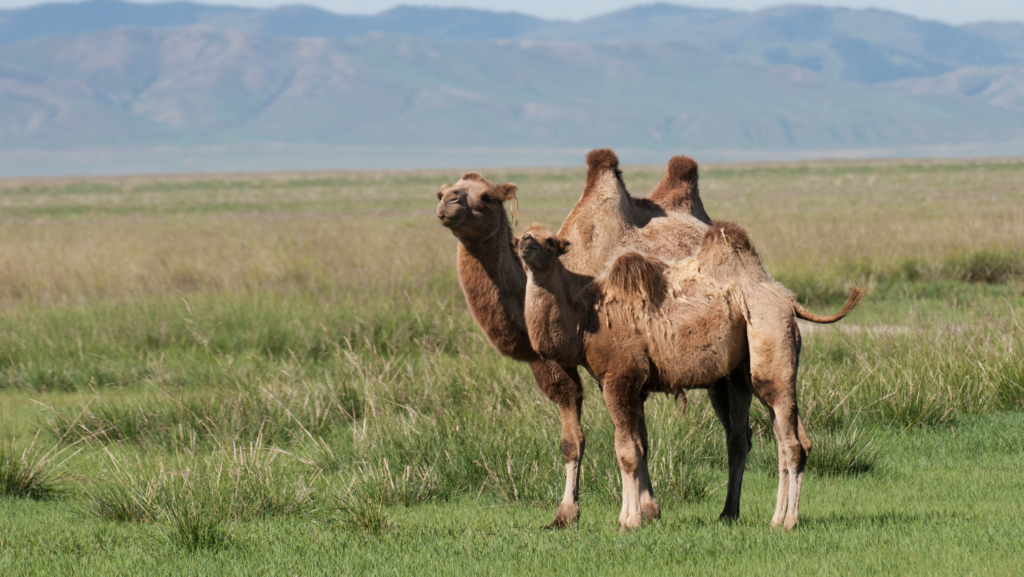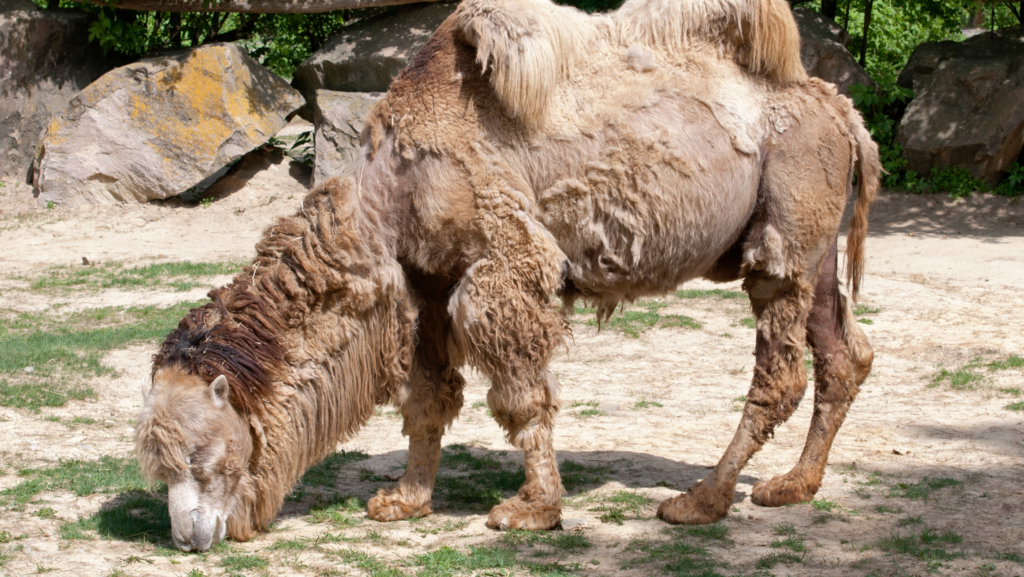Birth:

The Bactrian camel, scientifically known as Camelus bactrianus, is a remarkable and enduring creature native to the arid regions of Central Asia. The birth of a Bactrian camel is a significant event in the life cycle of these hardy animals. Typically, the female camels, known as cows, have a gestation period of around 13 to 15 months. When the time for birth arrives, the cow seeks out a secluded and relatively safe place, away from potential predators.
A Bactrian camel calf is born with a thick coat of fur to protect it from the harsh weather conditions of its native habitat. The mother plays a crucial role in nurturing her newborn, providing it with essential nutrients and protection. The young calf learns quickly to stand and walk, adapting to its desert environment with remarkable resilience.
Growth and Life:

As the Bactrian camel grows, it becomes increasingly adapted to its surroundings. The dual-humped structure of its back is a distinctive feature that allows the camel to store fat for sustenance during times of scarcity. These remarkable animals are well-suited to withstand the extreme temperatures and challenging terrain of the Central Asian steppes and deserts.
Bactrian camels have a lifespan of approximately 40 to 50 years in captivity, although their lifespan in the wild may be somewhat shorter due to various environmental challenges and predators.
Food:
Bactrian camels are herbivores and have an incredible ability to consume a wide variety of vegetation, ranging from dry grasses to thorny shrubs. They are known to graze on sparse vegetation found in their native habitats, utilizing their tough mouths and specialized digestive systems to extract nutrients from even the most fibrous and coarse plant materials. These camels can go for extended periods without water, as their bodies are adapted to conserve fluids in arid conditions.
Reproductive Behavior:
The reproductive cycle of Bactrian camels plays a crucial role in their survival. Female camels become sexually mature at around three to four years of age, while males, known as bulls, reach maturity at a similar age. During the breeding season, male camels engage in displays of dominance and aggression to establish mating rights. Once a pair has formed, gestation begins, leading to the birth of a single calf after the lengthy gestation period.
Death:
The life of a Bactrian camel, like any living creature, eventually comes to an end. Factors such as environmental challenges, diseases, and, in the case of those in captivity, the care provided by humans, influence the lifespan of these animals. In the wild, predation by natural predators such as wolves can also contribute to the end of a Bactrian camel’s life.
Overall, the life cycle of the Bactrian camel is a testament to its adaptability and resilience in the challenging environments of Central Asia, showcasing the remarkable ways in which these animals have evolved to thrive in arid and harsh conditions.

